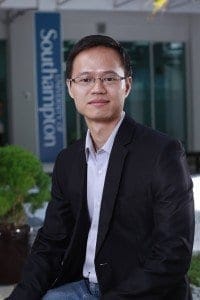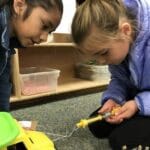My Teaching Journey – Dr Pu Suan Hui
Name: Pu Suan Hui
Name of institution: University of Southampton Malaysia Campus
Role: Assistant Professor
 What made you choose to become a lecturer?
What made you choose to become a lecturer?
The University of Southampton Malaysia Campus (USMC) is a fully-owned branch campus of the University of Southampton, UK where all lecturers are expected to balance a career in both teaching and research. For me, this is an ideal career option because it allows me to do what I love, and also to influence the next generation by training them to be competent engineers. At the moment, USMC is delivering the Engineering Foundation Year programme alongside the degree programmes in Mechanical Engineering, Electrical and Electronic Engineering (EEE), and Aeronautics and Astronautics. In the first two years of the degree programmes, our students get to interact closely with research-active, highly-qualified academics in the Malaysia campus. The class size in USMC is small which means that lecturers know that students by name and there are excellent opportunities for interaction. The environment at USMC is also safe and highly conducive for study as there are not many distractions compared to large universities. When the students transfer to Southampton, they get access to world-class research facilities and professors who are world leaders in their field.
What are the qualifications needed for this role?
All lecturers for the degree programmes at USMC have earned a PhD from large research-based universities. I spent 7.5 years at Imperial College London, earning my first degree in mechanical engineering and my PhD in electrical and electronic engineering. On top of that, the university also equips all teaching staff with the pedagogical knowledge required to teach at the university level. Since joining USMC, I have completed a postgraduate certificate in academic practice and am now a Fellow of the Higher Education Academy (FHEA) in the UK. In addition, I worked in the semiconductor manufacturing industry after my PhD and this enhances my ability to instruct undergraduate and research students.
Tell us about your teaching experience
I have about seven years of teaching experience at the university level. When I was a PhD student I was a laboratory demonstrator as well as a mathematics tutor. I found that experience to be very enjoyable and in a way that encouraged me to pursue a career as a university lecturer. At USMC, I teach mechanics and programming to first-year engineering students on the mechanical and aeronautics programmes. I am also involved in the second-year labs where the students learn how to programme microcontrollers in order to build an autonomous robot. Essentially they are taught how to get a computing processor (the microcontroller) to talk to the sensors (for vision and positioning) and also to move the robot (using a variety of motors). This culminates in a project that is aligned with the Eurobot competition specifications.
Apart from teaching undergraduates, I am also currently supervising four PhD students on their postgraduate research. Every year during the summer break (June to September), I also travel to the main campus at Highfield, Southampton to supervise Master's (MSc) students on their research projects.
What are some of the biggest challenges you face in the course of your work? How do you deal with them?
My biggest challenges are typically related to my research projects because by nature you are pushing the boundaries of knowledge. My current research interests lie broadly in the development of novel sensors as well as novel applications for existing sensors. Apart from the scientific aspects, managing research projects typically require a lot of coordination with various parties within the university and also external parties like collaborators or funding bodies. Multiply that by a factor of five or so because I am always working on several projects at once and brewing ideas for new ones. This means that it can get very busy at times!
What do you think makes your institution a popular choice among students?
The University of Southampton has many illustrious alumni holding leadership positions in various multinational organisations such as Shell, Dyson, Rolls-Royce, Airbus and Mclaren Automotive, just to name a few. There are also examples of those who go on to form technology start-ups by commercialising work that they have done at university. Due to the way to we train our students – we have a strong emphasis on fundamental theory as well as practical hands on engineering – our graduates are highly sought after in the job market, whether they choose an engineering career or opt to enter a different field e.g. management consultancy, finance, civil service, etc.
What advice do you have for parents who wish to enrol their child in your institution?
At the moment our degree programmes are focused on engineering and as such this only applies to parents whose children are interested in engineering. I would say that first and foremost, they must be able to meet the entry requirements because there is no relaxation of entry requirements for USMC relative to the main campus. This is to ensure that we maintain the highest standards in our programmes and that the incoming students can step up to the academic rigour that is required of them. However, for parents with children who are strong in maths and physics and are passionate about engineering and technology, I would say simply that they should continue to allow their children to explore, to cook up projects of their own, participate in engineering events (e.g. Maker Faire) and most importantly, to have fun in the process.
Keen to share your story? Head over to this page to submit it online!
Last Updated on 8 August 2021
A big fan of MOOC, AI and data science. I am intrigued by how technology has transformed education and makes learning fun again.





